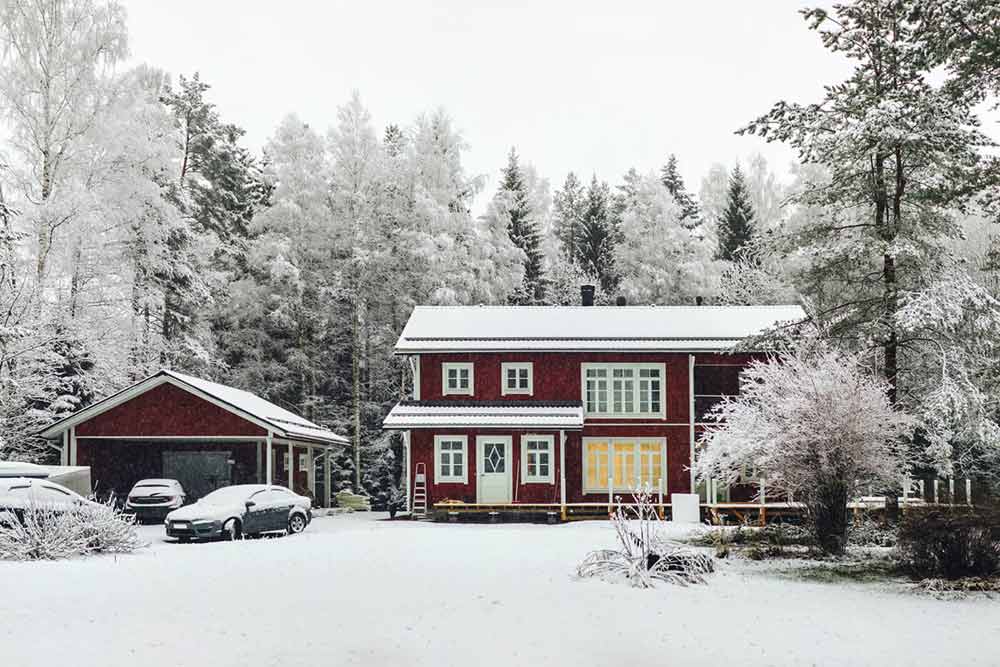What updates are needed to use my cottage in the winter? What additional costs will there be if I use my cottage in the winter? How does winterizing my cottage impact my insurance?
What updates are needed to use my cottage in the winter?
Taking a cottage from three seasons to four is no small feat and will likely require a good-sized investment. This is because getting your cottage ready for winter use will probably involve more than just adding a bit more insulation behind the walls. Here are a few of the things you should consider when getting your cottage four-season ready:
1. Bump up the insulation. Proper insulation is essential during a cold Canadian winter. You’ll also want to be sure to use a vapour barrier to prevent condensation inside your walls. Without this protective layer, you could put your cottage at risk for mould and rot.* These are two things that aren’t covered under a standard home policy.
2. Upgrade windows and doors. You’ll want to ensure all windows and doors are properly sealed to prevent drafts from coming in and warm air from going out (this also helps with energy savings). Depending on the type of windows currently installed at your seasonal property, they may need to be swapped out for a year-round alternative (such as new double-paned windows).
3. Install an appropriate heat source. How do you plan to heat your cottage over the winter? Do you have a fireplace or woodstove? Electric baseboards or heaters? Or a furnace? You’ll want to select a heating source that is best for your cottage. This may include considering what will be the most energy and cost efficient. It’s also worth asking
4. Update your utilities. Your electrical and plumbing systems (including your septic tank) may need upgrading or replacing to meet the needs of increased use. Also, to prevent frozen and burst pipes, plumbing needs to be run on the warm side of your insulation.*
All in all, you’ll want to take a full inventory of what work needs to be done before getting started. You may even want to get a quote from a local
What additional costs will there be if I use my cottage in the winter?
Above and beyond the cost to renovate, you can likely expect to pay more when it comes to heating and electricity (unless you’re off-the-grid). If winterizing also means more trips to the cottage, you might have some additional transportation costs too.
You may want to consider hiring a landscaping or snow removal company to keep your driveway and walkways clear of snow and ice (especially if you have plans to rent out the property). This might even be a requirement of your insurance policy. From a
Speaking of having fun, if you haven’t already, you’ll probably want to invest in winter toys like snowshoes or cross-country skis, or other cold weather activities.
How does winterizing my cottage impact my insurance?
Prior to turning your cottage into a four-season property, you’ll want to chat with your insurer to see how this affects your coverage and your premium. If you decide to move forward with the change, don’t forget to also tell them about your reno plans. Coverage may be limited or unavailable under your
Your insurer will also want to know how you plan to use the cottage over the winter. If you’re thinking about going the
Turning your seasonal property into an all-season vacation home can actually help lower the chance of something happening at your cottage (because you’ll be there to mitigate loss). But, keep in mind that you’re still responsible for preventing frozen pipes while you’re back at home. In order to maintain coverage for freezing, most home policies require you to shut off the main water supply and drain all the pipes or have someone come in and check on your cottage from time to time to ensure the heat is on. This is usually required if you’re not going to be at the property for a certain amount of time, such as 14 days in a row. But, be sure to
